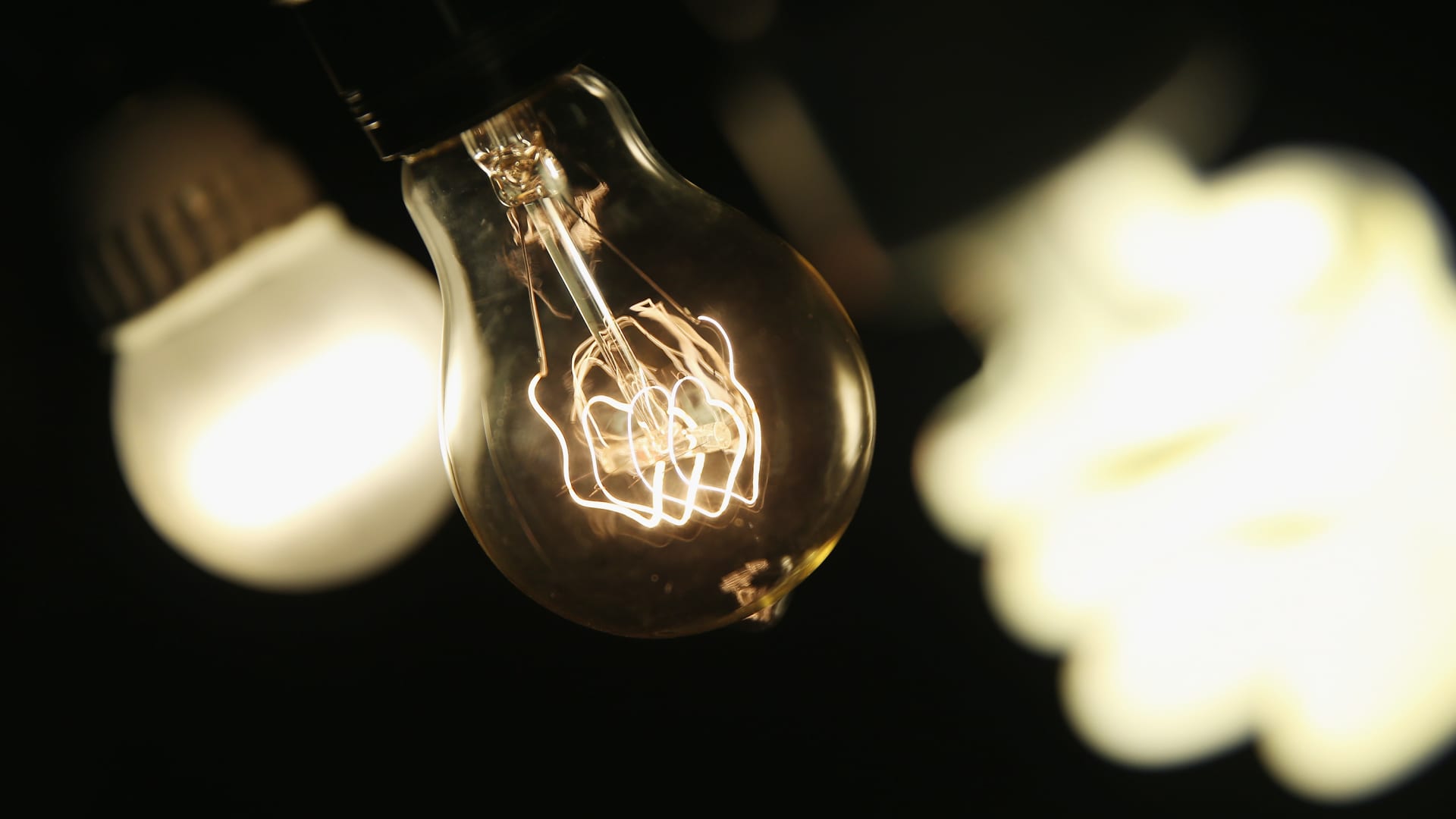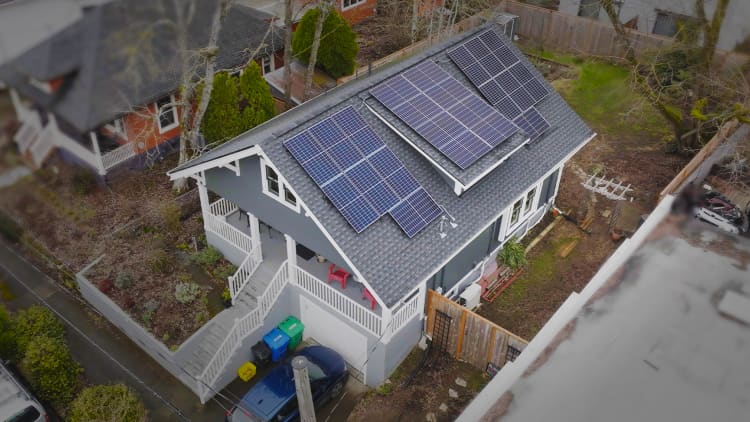

LED light bulb (L) and a compact florescent (CFL) light bulb
Scott Olson | Getty Images
On Tuesday, the Biden administration put the final nail in the coffin for incandescent light bulbs, the result of a decade-plus-long legislative path.
The journey began in 2007 when the Energy Independence and Security Act passed. That law required the Department of Energy to evaluate whether efficiency standards for light bulbs needed to be set or amended and required a minimum standard of energy efficiency for light bulbs of 45 lumens per watt to be considered.
Lumens are a measure of how much light is coming from a light bulb and is a more modern measure than watts, which measures energy usage, according to the DOE. A rule requiring the minimum standard efficiency of 45 lumens per watt for light bulbs effectively bans halogen and incandescent bulbs.
The 2007 law required that if the DOE determined a new energy efficiency standard was necessary, it should go into effect by January 1, 2017. But politics intervened as the Trump administration appealed those rules.
The Biden administration picked the issue back up. And in April 2022, the Biden administration issued a rule requiring the minimum standard efficiency of 45 lumens per watt, which became effective in July. At that time, the Department of Energy said it would have a gradual transition to the new rule so that stores with inventory would not be stuck with light bulbs they could no longer sell. In Department of Energy lingo, this is called “progressive enforcement.”
Full enforcement of the ban for retailers took effect on Tuesday.
The DOE does not disclose its techniques for enforcing these step-wise implementation of the rule. However, the agency’s new regulations will be enforced in “a fair and equitable manner,” and smaller retailers are advised to reach out to the DOE to speak about existing inventory they may still have on hand, a spokesperson told CNBC.
Enforcing the sale of the more energy-efficient light bulbs will save consumers nearly $3 billion per year on their utility bills, according to DOE estimates, and cut carbon emissions by 222 million metric tons over the next 30 years. That’s about the quantity of emissions that 28 million homes generate in a year, the Department of Energy said.
“By raising energy efficiency standards for lightbulbs, we’re putting $3 billion back in the pockets of American consumers every year and substantially reducing domestic carbon emissions,” Energy Secretary Jennifer Granholm said in a written statement back in April 2022 when the rules were reinstated. “The lighting industry is already embracing more energy efficient products, and this measure will accelerate progress to deliver the best products to American consumers and build a better and brighter future.”
Not all light bulbs are included in the ban. Exceptions include a whole slew of specific light bulb implications, including appliance lamps, black light lamps, bug lamps, colored lamps, general service fluorescent lamps, marine lamps, marine signal service lamps, mine service lamps, sliver bowl lamps, showcase lamps, and traffic signal lamp, to name a few.
Also, while the 45 lumens per watt energy efficiency standard was being phased in, in December the Biden administration kickstarted the process to consider increasing the energy efficiency standard for light bulbs to over 120 lumens per watt for the most common bulbs. That would accelerate the transition away from comapct fluorescent bulbs as well, toward more efficient and long-lasting LED bulbs. If that more restrictive energy efficiency rule were to go into effect for light bulbs, then there would be a timed phase-in, similar to the rule for 45 lumens per watt.





